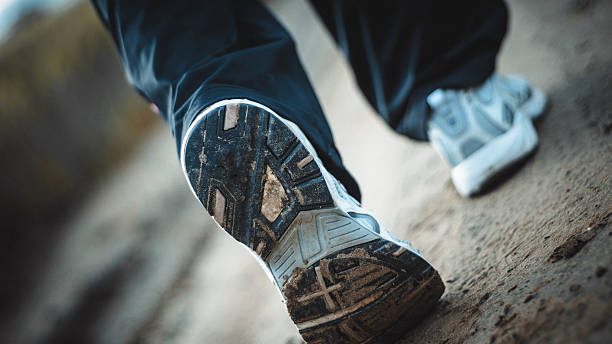Looking to explore the great outdoors? Are you ready for a hiking adventure but don’t know How to select hiking boots? Choosing the right footwear is key; from lightweight trail runners suited for tackling long-distance hikes like on the Pacific Crest Trail, or more durable full-grain leather models, there are many options.
Don’t be overwhelmed. Finding something between those extremes is possible so your feet can stay comfortable and supported while taking in nature at its best.
Why Choose a Hiking Boot?
When choosing the right footwear for a hike, a wide variety of styles are available, from feather light trail runners suitable for short day hikes to heavy-duty leather boots that tip the scales at over four pounds. Ultimately, it comes down to selecting shoes or boots that provide comfort and flexibility, and necessary support wherever your journey may take you.
Especially when carrying heavier backpacks. Our experts usually opt for light hiking trainers unless trekking on rough terrain with more than thirty pounds in tow. Then they turn their attention towards taller and sturdier options.
Stepping off the beaten path requires extra preparation and protection. Investing in a sturdy pair of hiking boots is key – they can help you stay safe on rough terrain while preventing twisted ankles with superior support. Plus, their thicker soles cushion your feet from any obstacles, so you’ll be ready to take on whatever lies ahead.
Advantages of Boots
A good pair of hiking boots is your best bet if you’re looking for extra protection or support on rough and rocky trails. They might be slightly heavier than other shoes, but these trusty companions stabilize against twisted ankles and keep feet dry in the mud and slush.
Plus, tall-cut designs with stiff shanks offer added security when making off-trail paths through treacherous terrain – not to mention peace of mind defending yourself from any creatures that may lurk about.
WHAT SHAPE AM I IN?
If you consider yourself a serious hiker and want to buy shoes tailored to your needs, it’s important to ask the right questions. Assessing how much experience you have in hiking and what type of physical shape you’re in can help guide which kind of shoe is appropriate.
For instance, if your hikes are more technical with regular outings under your belt but without injuries, low-cut light shoes offer greater movement freedom than others.
Experienced hikers, however, should consider whether or not they’ve experienced an ankle sprain as this could change the type of shoe best suited for them significantly from someone who hasn’t had such issues before – potentially requiring extra support, thus changing the selection considerably.
Features to look for
When hiking, the gear that supports your feet is of utmost importance. But understanding all the different materials and features used in boots can be overwhelming – leather or fabric? What exactly does a gusseted tongue do? To help make shopping easier, let’s look at some common boot components and how they benefit your outdoor excursions.
Different materials
For those embarking on a hiking adventure, footwear is key. Your shoes or boots can determine how weatherproof and breathable your experience will be. The soles are usually rubber for all models. Still, what wraps around them – often referred to as ‘uppers’- varies in material depending upon desired features such as water resistance and durability.
Full grain leather offers maximum protection from scratches but may not provide much flexibility; nubuck and suede prove softer yet less reliable against water. Synthetic materials boast increased Portability through lighter weight with more ventilation options available too.

Synthetics offer many benefits for hikers, such as enhanced breathability and flexibility at lower costs. However, leather is usually more durable and resistant to water. Mesh panels are commonly added in low-wear areas to reduce the overall weight without sacrificing durability.
For waterproofing needs, shoe manufacturers often insert waterproof-breathable membranes between two layers on the upper part of shoes that feature popular technologies like GORE-TEX or eVent – making them impermeable while providing some airflow.
How heavy should hiking boots be?
When looking to buy the perfect hiking boots, weight is a critical factor. If you desire maximum durability and support for your adventure goals, heavier boots may be more suited;
however, this comes with increased fatigue due to carrying extra load. Alternatively, lightweight shoes can allow longer hikes without stressing out your legs but lack many protective features in their bulkier cousins. The decision ultimately lies with what’s important to you on trails.
How to fit hiking boots and Shoes?
When you’re ready to take on the trails, go and find your perfect fit. Many stores offer private fitting appointments – call them to inquire about availability near you.
Alternatively, contact their Service Centre by phone, email, or live chat – they’ll provide customized brand recommendations based on your foot shape and activity type of choice.
Find the right size
Finding the perfect fit for your shoes has never been easier. You can head into a store to have your feet measured and find out exactly which size most accurately matches you.
If that’s not an option, use a tape measure at home to get close – stand up when measuring so results are as accurate as possible. Don’t forget, though – brands may differ in their sizing standards, so it’s best to double-check the charts on mec.ca before committing.

